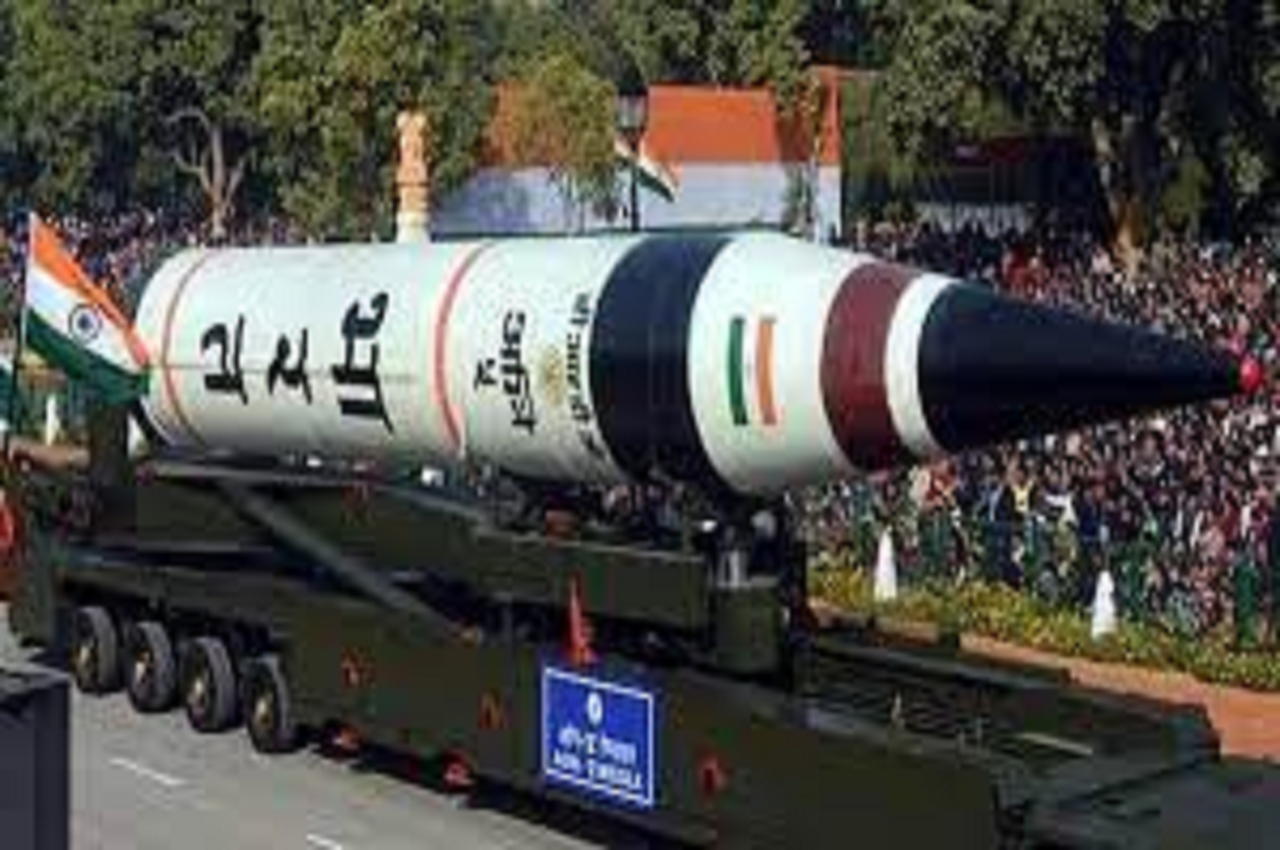Agni V missile: India’s long-range surface-to-surface nuclear-capable ballistic missile, Agni-5, test-fired successfully on December 15 from APJ Abdul Kalam Island, Odisha.
The Strategic Forces Command (SFC) independently tested Agni-5 last October for the first time, a few months after China tested its hypersonic missile.
The latest test comes amid Chinese and Indian troops face-off near the Line of Actual Control in Tawang, Arunachal Pradesh. Agni-5 can strike targets at ranges ranging from 5,000 to 5,500 km, putting major Chinese cities, including the capital Beijing, within its reach.
Days after successfully testing the nuclear-capable Agni-5 ballistic missile, India has developed the capability to strike targets beyond 7,000 kilometres away. Here know about Agni V missile:
Advance features of Agni V
- Agni-V is a three-stage missile that stands 17 metres tall and two metres wide and can carry 1.5 tonnes of nuclear warheads. It is an advanced version of the indigenously built Agni, or Fire, series, which began in the 1980s.
- It is an advanced version of the indigenously built Agni, or Fire, series, which began in the 1980s.
- The medium to intercontinental ranges of Agni missile systems 1 to 5 range from 700 km for Agni-1 to 5000 km and above for Agni-5.
- the missile can be launched from road and rail platforms, making it easier for it to be deployed and launched at a quicker pace.
- The performance of the missile was tracked and monitored by radars, range stations and tracking systems all through the mission including by the assets deployed in the sea.
According to military sources, the Defence Research and Development Organization (DRDO) was able to reduce the weight of the Agni-5 missile by replacing steel content with composite materials.
“The weight reduction that has been achieved in the missile system is beyond 20 per cent and if the government wants, the nuclear-capable strategic missile can go beyond 7,000 kms,” they said.
The 7,000km range of the missile, which is part of the Strategic Forces Command, will provide planners with a variety of options during clash period.
Because India has a no-first-use policy, its nuclear weapons programme is primarily for deterrence against its adversaries, including China and Pakistan.
It has been working on improving its second strike capability and developing a submarine-launched ballistic missile.
According to the sources, the government will have to decide whether to test the missile for its new maximum possible range.













